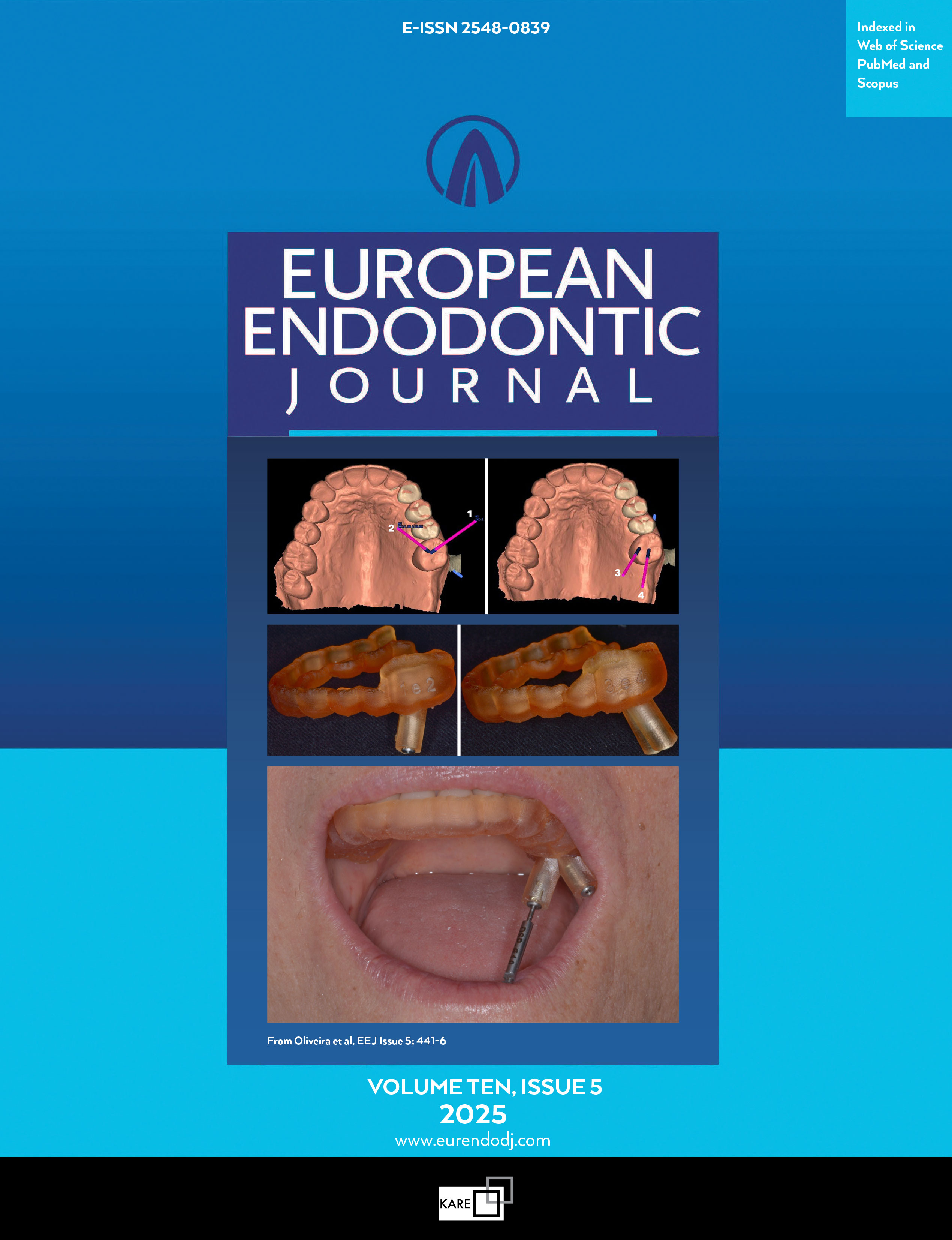Metrics
2024 IMPACT FACTOR
5 year Impact Factor
Eigenfactor Score
2024 CiteScore
Journal Citation Reports
(Clarivate 2025, JIF Rank)
The Effect of Glide Path Preparation on Root Canal Shaping Procedures and Outcomes
Mahdi Ajina, Georgios Billis, Bun San ChongInstitute of Dentistry, Queen Mary University of London, Barts & The London Faculty of Medicine & Dentistry, London, United KingdomThe glide path in non-surgical root canal treatment refers to a smooth radicular tunnel from the root canal orifice to its terminus. Its establishment is aimed at creating sufficient space to facilitate the subsequent and safer use of engine-driven nickel titanium (NiTi) shaping files. Glide paths were originally prepared using stainless steel hand files to, at least, a loose International Organisation for Standardisation (ISO) size 10 or larger. However, the advent of engine-driven NiTi instrumentation has led to the availability of many engine-driven NiTi glide path files. The aims of this review were to assess the effects of engine-driven and manual glide path preparation (GPP) on root canal shaping procedures and outcomes. An online search of the PubMed, Embase, Scopus and ScienceDirect databases was conducted and 32 studies were identified. The published literature suggests the use of engine-driven glide path files to be beneficial in maintaining the original root canal anatomy, reducing preparation time, decreasing apical extrusion of debris and causing less postoperative pain. However, there was no difference between engine-driven and manual GPP with regards to the physical strain exerted on the shaping files. Future research focused on clinical outcomes is needed to help ascertain the clinical benefits for patients. (EEJ-2021-03-057)
Keywords: Engine-driven instrumentation, glide path, nickel-titanium, outcome, preflaring, root canal shapingManuscript Language: English
(1345 downloaded)


